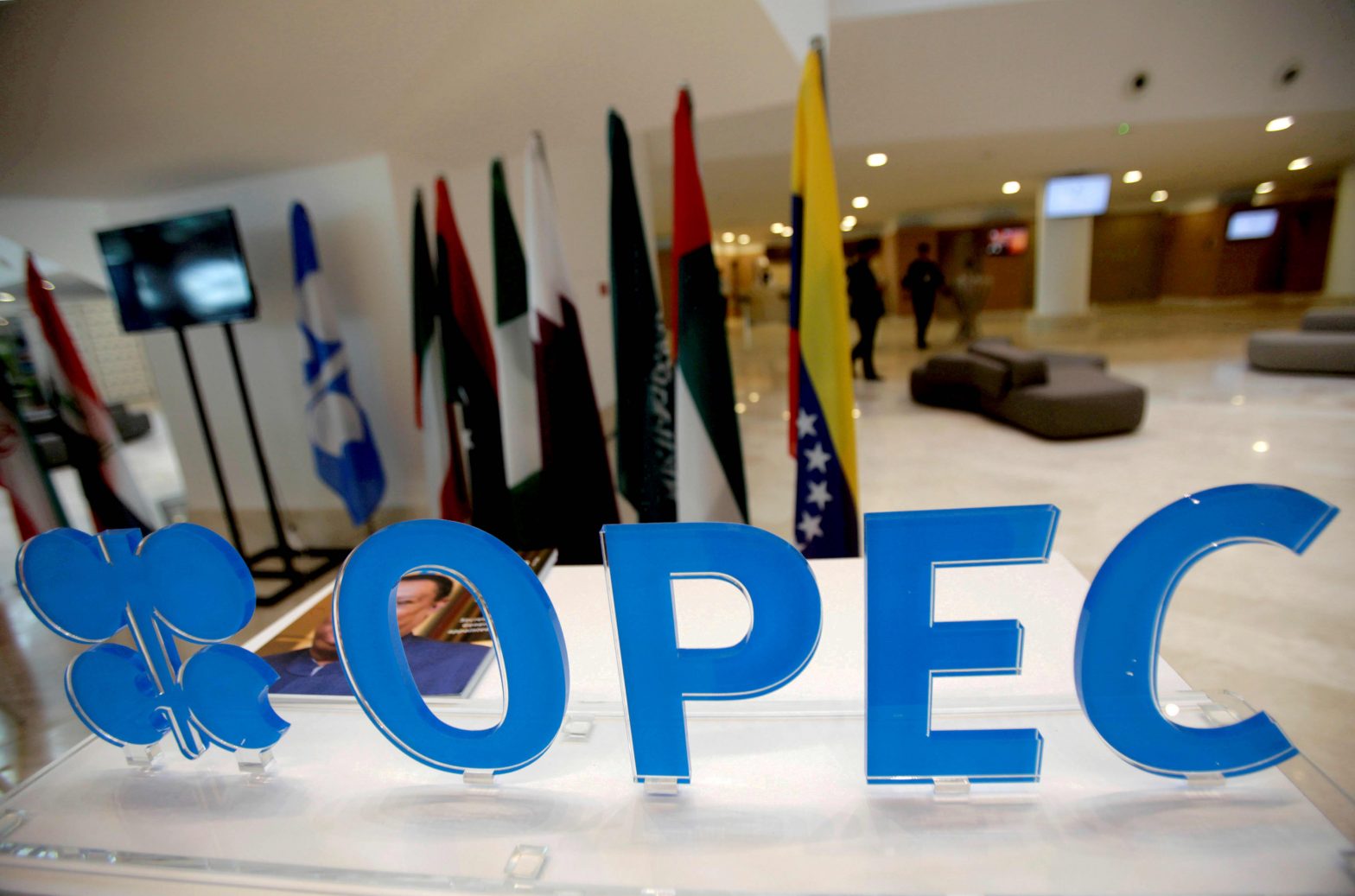The OPEC logo pictured ahead of an informal meeting between members of the Organization of the Petroleum Exporting Countries (OPEC) in Algiers, Algeria.
Ramzi Boudina | Reuters
A group of some of the world’s most powerful oil producers is meeting Wednesday to discuss how much of an impact the new omicron Covid variant is likely to have on energy demand.
Led by Saudi Arabia, the Organization of the Petroleum Exporting Countries is scheduled to meet via videoconference from 1 p.m. London time. The 13-member group will be joined by non-OPEC allies such as Russia on Thursday.
There is little sign the broader group, often referred to as OPEC+, intends to change course from its current output plan of a monthly hike of 400,000 barrels per day.
OPEC ministers representing Saudi Arabia and Iraq have both indicated the group is likely to sustain this output policy, while non-OPEC leader Russia said earlier this week that there would be no need for urgent action on the oil market.
Some analysts have questioned whether OPEC+ may be tempted to take a pause to assess the market, however, citing heightened price volatility and fears over the potential hit to energy demand because of the omicron variant.
Indeed, it is thought some OPEC+ producers may struggle to meet their quota next month if the group does push ahead with an output hike.
A Reuters survey published on Tuesday found OPEC pumped 27.74 million barrels per day in November, up 220,000 barrels from October, but that was below the 254,000 increase allowed for OPEC members under the OPEC+ agreement.
International benchmark Brent crude futures traded at $72.62 on Wednesday afternoon in London, up over 4.8% for the session, while U.S. West Texas Intermediate futures stood at $69.24, around 4.6% higher.
Oil prices have whipsawed in recent days. Both Brent and WTI futures contracts are on track to register their steepest monthly falls in percentage terms since March last year, Reuters reported, down 16% and 21%, respectively.
“So far, Russia and Saudi Arabia have put on [a] brave face,” Stephen Brennock, a senior analyst at PVM Oil Associates in London, said in a research note.
Brennock said OPEC had several issues to discuss this week, including the potential impact of the omicron variant on future demand, the U.S.-led release of strategic reserves from oil-importing nations and Iran’s possible re-entry into the oil markets.
“All things considered, there is much to suggest that OPEC+ will not initially step up its oil production any further in an effort to maintain current prices at around $70/bbl,” Brennock said.
“OPEC+ have erred on the side of caution since it began slowly boosting supplies and a decision to shelve a planned increase output in January and keep its quota flat comports with its cautious approach.”
Downside oil price risks
The two days of OPEC meetings come after a period of elevated tension over high oil prices between the U.S. and its allies in the Gulf, most notably Saudi Arabia.
U.S. President Joe Biden announced on Nov. 23 the coordinated release of oil between the U.S., India, China, Japan, South Korea and the U.K to help cool the market.
Under the plan, the U.S. is to release 50 million barrels from the Strategic Petroleum Reserve. Of that total, 32 million barrels will be an exchange over the next several months, while 18 million barrels will be an acceleration of a previously authorized sale.
The move was prompted after OPEC+ had repeatedly ignored U.S. pressure to increase crude supply to stymie surging fuel prices.
Amos Hochstein, the top U.S. energy diplomat, told CNBC on Monday that the Biden administration would be prepared to release even more barrels of oil should the need arise again. Hochstein has been holding meetings with OPEC officials in recent days to try to improve U.S. ties in the Middle East.
Brad Waddington, economics and markets analyst at Longview Economics, said unless OPEC+ announces new production guidance for months beyond January, the market may be underwhelmed by Thursday’s OPEC+ meeting.
“Even if OPEC+ announces a longer-term adjustment, though, downside risks to oil prices remain,” Waddington said, citing U.S.-Iran nuclear negotiations and concern over omicron.
“In summary, appetite within OPEC+ to change their plans is probably growing. Whether significant and convincing changes are announced this week bears watching closely and will be key for oil price direction.”
